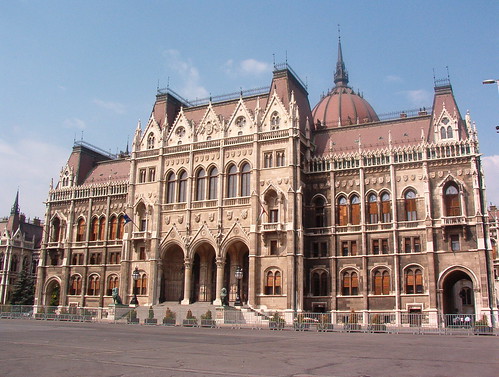The Hungarian Parliament, built between 1885 and 1902, is a symbol of the sovereignty of the country and one of the most beautiful buildings in the world. In its time of construction, the building was the oldest parliament in the world (today is the third, after Romania and Argentina) and a clear example of the Hungarian economic and cultural power of the late nineteenth century, which would be turned off almost in full in the next century, due to the two World Wars and the Cold War that would follow. Note that at that time, Hungary had a territory three times the current.

Photography by Spacelives
Background and motivation
In 1867, the Austro-Hungarian empire decided to create a dual monarchy, and Hungary received more independence and even wrote his own constitution. In 1873 Budapest was created following the merger of three cities (Buda and Pest Óbuda). The Hungarian National Assembly then decided to establish a new parliament.
Emperor Franz Joseph I of Austria and Prime Minister of Hungary, Kálmán Tisza, then led to a competition where some of the world’s most renowned architects presented their proposals. Imre Steindl won with a lavish and eclectic design and neo-Gothic Parliament based in London. Unfortunately, Steindl would not complete his work because he went blind a few months before his inauguration and died that same year.

Photography by David Spender
Construction and design:
Parliament (Országház in Hungarian) was built between 1885 and 1902, being the largest parliamentary building so far and the most ambitious architectural and expensive of its time. The building has a length of 268 meters and 118 meters deep. Contains over 20 km of stairs, and 691 rooms (including more than 200 offices). The central dome has a height of 69 meters, and is where we find most precious ornaments, which are reflected in the display case showing the crown of Hungary.
The building sits on the banks of the river Danube in the Pest side. The planned construction on the river had to reinforce the floor with more than two meters from the foundation settled very precisely. The main facade faces the river Danube, but the official entrance is just on the opposite side. The facade has statues of Hungarian rulers, Transylvanian leaders and famous military history.
The main style is neo-Gothic parliament as we said, but they are also clear influences Renaissance and Byzantine touch omnipresent in their rooms and corridors, especially noticeable in the delicate decoration of the stairs leading to the main hall. Through this mix of influences are wanted to represent the different cultures that have influenced and shaped to Hungary over its thousand-year history.
Inside we find 90 statues representing the country’s history. The interior spaces were built with the best materials at the time, always prioritizing the use of materials and Hungarian craftsmen. The artworks were not far behind. The result: a colossal precious finishing, architectural and artistic, with just over 100 years of life continues to give shelter to the legislative establishment of the country and certainly offers the most beautiful image of the capital, whether by day, showing your wonderful picture and night, reflecting in the waters of the Danube and illuminating the night of Budapest.

Photography by chad_k
Notes of interest:
– There are free tours to European citizens on presentation of your passport. The interior of parliament can only be seen in these tours, in English and Spanish at different times of day. On Saturday afternoon there visits.
– The crown jewels of Hungary are in the dome of Parliament, and it is a must, as much jewelry as the dome itself are magnificent works of art.
– The best views of the Hungarian parliament was obtained from the edge of Buddha, the Fishermen’s Bastion.
Good luck!
Leave a Reply
You must be logged in to post a comment.
Recent Comments